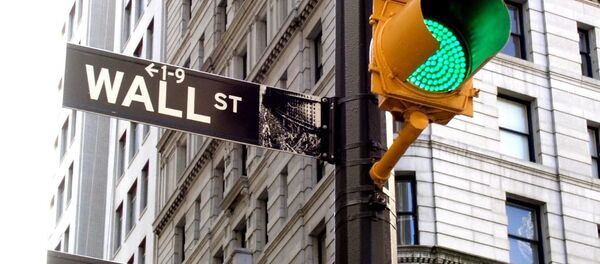Kristian Rouz – With US economic confidence having picked up in recent months, and the rebound in corporate earnings and consumer sentiment, real GDP growth is likely still subdued in the outgoing quarter, and the projections for the current year are still very modest.
The US economy is still living in the Obama reality of slowing growth, low labor productivity and excessive regulation, hampering business activity and the creation of market-sustainable jobs. Financial market participants have been overly optimistic ever since Donald Trump was elected into office in November, but the non-financial sector is still struggling.
The Federal Reserve Bank of Atlanta published its 1Q17 GDPNow growth projection, and is expecting an expansion of 0.9pc the current quarter, the worst since the Great Recession. Inventory investment in the US economy is still demonstrating downward dynamics, contributing some —0.79pc to the annualized season-adjusted GDP. This means that private sector stockpiles are still failing to convert into positive growth.
That said, US businesses are mostly still awaiting the Trump-proposed fiscal stimulus package, with tax cuts and infrastructure investment, as well the border tax adjustment, which are all expected to spur business investment and overall wealth generation.
The ‘Trump effect’ has so far been mostly psychological, driving consumer spending only partially, whilst also encouraging wealth managers and equity investors, who are expecting a greater influx of capital in the near future.
"I view Trump as a tech stock," Claus te Wildt of Fidelity Investments said. "He could fly high, or he could be a train wreck. We don’t know yet which … Normally, presidents don’t matter much (to the economy), but I think this one could be consequential."
US domestic consumption, driving some 70pc of the economy, has demonstrated an uptick in consumer confidence, as higher Federal Reserve interest rates and, consequently, the rising costs of credit, driving home buying and large-budget purchases, such as cars.
"Consumers are feeling better, especially about home values; housing valuations are at a decade’s high," Stephanie Link of TIAA Investments said.
However, as outlined above, the broader consumer sector is affected by gains in inflation and stagnant wages, and US households are mostly struggling to fork out the money for unnecessary purchases.
Factory input costs also increased in March to their highest since 2011, and output prices posted an uptick as well, suggesting the broader US inflation measure is firming.
"The reports painted a mostly upbeat picture of the economy," Daniel Silver of the New York-based bank JPMorgan said.
All these positive consequences of the ‘Trump factor‘ will likely push US growth higher closer to the end of the year. Still, business investment, the key factor contributing to the expansion in the Main Street economy, will remain mostly subdued until after the Trump administration unveils their stimulus measures, which will likely take effect no earlier than early next year.
"Even if a bump in the economic data does arrive, it may not last, unless the Trump administration advances policies that enhance longer-term productivity, through, for example, education reform, apprenticeship programmes, skills training, and labour retooling," Mohamed El-Erian of Allianz and formerly of the Obama administration wrote.
The most acute issues that the Trump administration faces are the ability of the White House to actually enforce their agenda, and the immediate effects of their immigration policy. With stiff resistance from the left of the US political spectrum, as evidenced by the recent ‘travel ban’ turmoil and efforts to repeal Obamacare, Trump’s capability to force his economic agenda might be limited by the obstruction of Congressional Democrats, for example.
With immigration, however, the issue is multi-dimensional. Whilst the anticipated ‘mass deportations’ could contribute to a liftoff in wages and labour productivity, severe workforce shortages, already visible in certain sectors of the economy, will require a new immigration policy in order to stave off the idling of industrial furnace, for instance.
Massive tax cuts, on their part, will benefit all participants of the economy, allowing consumers to spend more, businesses to invest and reinvest more, and manufacturers to hire more workers and produce more goods.
Yet, as of now, Trump mostly only looks good and promising, and most of the current year the economy will be driven by improved sentiment, which is based on the trust in his administration. The current 10-year economic cycle is nearing its end sometime in 2018-2019, and the threat of a new recession, albeit delayed, is still not off the table. Therefore, more decisive economic action is required as soon as the White House can pull itself together, or else it might turn out to be too late, to the utter satisfaction of Trump’s political opponents.







